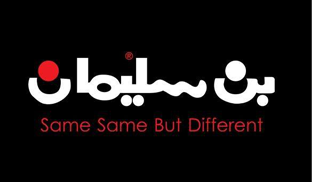HR teams don’t operate out of thin air. To ensure a company’s employee- and hiring-related activities are doable, companies need an HR budget or HR budget planning.
But many new HR hires don’t know if their companies have an HR budget to begin with or even what that budget entails.
Not to mention, companies with HR budgets may often end up sacrificing benefits that would have been allocated to employees in favor of other plans like higher marketing or sales expenses.
In this article, we’ll explain what an HR budget is and what it’s for. We’ll also be looking at the HR budget planning process and show you how to create an annual HR budget for your company.
What is HR budgeting?
HR budgeting, also referred to as HR budget planning, is the process of creating an annual HR budget for your company.
An HR budget is the amount of money a company allocates to its HR team and department and various employee-related activities.
These activities include recruitment, employee engagement, benefits, planning, training and development, gifts during special occasions like Ramadan or Eid, employee recognition programs,…etc.
It’s worth mentioning that each team in your company should have a separate budget. Your HR’s annual budget shouldn’t be mixed up with your marketing team’s budget, for example.
“A budget is telling your money where to go instead of wondering where it went.” – Dave Ramsey, author and radio show host.
What is HR budget planning?

What is hr budget planning?
HR budget planning involves drawing up an annual plan for what needs to be done in a company and the costs associated with this HR to-do list.
However, it’s worth mentioning that HR budget planning may include some speculation because you’d be forecasting.
For example, a company may plan to train its employees on using new software, however, a surge in operating expenses may result in a cut in the HR budget. And this is very common especially amid rising inflation and costs.
Your HR budget may include an initial plan monthly employee evaluations and assessments, but time constraints may result in quarterly assessments only.
To create an annual HR budget, you’ll need to consider the various resources you’ll need. It starts with a good HR strategy.
A common misconception about HR budget planning is that it’s only used to pay salaries and recruitment fees. However, an HR budget extends far beyond those two needs.
It’s likely that the many misconceptions around HR jobs is the reason behind this misconception.
What’s included in an HR budget?

What’s included in an HR budget?
The HR budget is a document and it should include the following items. It may also include additional information and figures.
- The rate of employee turnover (could be for the whole company or by department)
- Salary information for employees (full-timers, part-timers, freelancers, temporary workers…etc).
- A forecast of the number of employees by the end of a year
- Recruitment expenses (including promoting employees internally)
- Employee engagement and recognition program(s)
- Employee retention expenses
- Training and development budget
- Payroll expenses
- Overtime expenses
- HR software (like an HR management system or HRMS)
- Administrative expenses
- Compensation and benefits strategy and policies
- Employee facilities such as mobile phones, laptops, other hardware
- Employee assessments and evaluation expenses (including psychometric tests)
Further reading: 6 Factors Affecting Employee Turnover and How to Fix Them
Who is in charge of setting the HR budget?
The HR manager or HR director is usually the person responsible for creating the HR budget. However, this may vary depending on the size of your organization.
After the HR manager or director creates the HR budget, they present it to the board, CEO, general manager, or co-founders for approval.
Once approved, the finance department becomes responsible for disbursing the needed funds based on the HR department’s needs and their plan.
Why do you need an HR budget?
Like anything that involves money, you’ll be wondering about the benefits.
Before you create an annual HR budget, it’s important you review salary surveys in your local market. This will help you forecast salary needs and increases better. It also helps you find and acquire skilled talents.
Here’s a quick overview of the benefits of HR budget planning or HR budgeting:
- Helps you understand your recruitment needs and limitations
- Helps you attract better and more qualified talents
- Prevents you from over-hiring
HR budget planning: How to create an annual HR budget

How to create an annual HR budget?
To create an annual HR budget for your company, you’ll need to follow these 4 steps.
Step 1: Follow an HR strategy
The first step is to have and follow an HR strategy. If you don’t have an HR strategy, you can either attempt to create one yourself or you can work with an agency like Tawzef to create an HR strategy for you.
It’s worth stressing that creating an HR strategy is not a one-person show. It requires effort and experience.
Step 2: Create a manpower plan
The next step is to create a manpower plan for your company. This should include all current roles along with forecasts of new roles you may add during the year.
To create your manpower plan, you’ll need to:
- Review the past year’s salaries, if applicable.
- Add all current salaries at your company (gross salaries).
- Use salary surveys for current and to-be-added roles.
Step 3: Conduct training-need analysis
An often-overlooked aspect of HR is training and development. However, it forms a core part of both your HR strategy and your HR budget planning.
Your training-needs analysis should cover the training that will likely be required for each team or department in your company.
Step 4: Review your employee rewards plan
Many companies skip this step but creating an employee recognition and rewards program helps you motivate, engage, and empower employees.
Creating an employee rewards and recognition plan for the year should be included in your HR budget.
Step 5: Review the previous year’s performance
Lastly, you’ll need to review the past year’s HR budget plan and see what was successful, what wasn’t, and what wasn’t carried out.
You’ll also need to see if you had to re-allocate costs to other areas. For example, if you had to reduce your training budget and re-allocate the funds into hiring or evaluation costs.
Or if a portion of your HR budget was given to another team or department.
Conclusion
HR budget planning is a process with several steps. Each step includes several steps as well. So, it’s not something you can create in a day or even a week.
You certainly can’t ask an HR specialist to create an HR budget for your entire business.
However, you can ask an HR company like Tawzef to do it for you.
Tawzef’s team of experts review the size and needs of your company and create your annual HR budget accordingly.
Get in touch with the Tawzef team to ensure smoother operations in your company.



























































































































